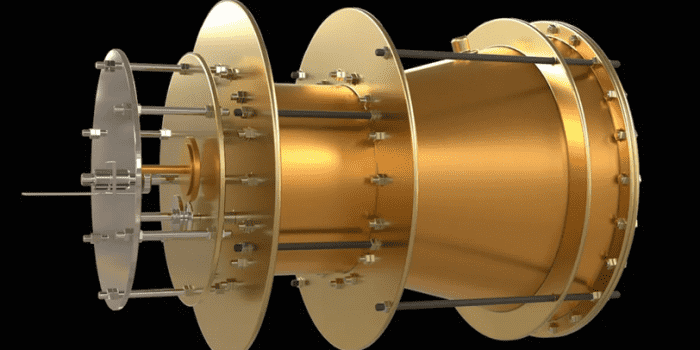Humans have always pushed their boundaries and achieved wonders. Now, imagine an engine that requires no propellant. It sounds impossible, and what it is set out to achieve is probably impossible, if not entirely.
Impossible puts most people off their set objectives, but that is not stopping one NASA engineer from testing theories around the EmDrive. It is a “helical” engine tipped to work without fuel. If the engine becomes a reality, it will take humankind to the far edges of space. Also, it would be the most exciting development of the century.
The concept is generated from British scientist Roger Shawyer’s theory, who suggested in 2001 that we could generate thrust by pumping microwaves into a conical chamber.
Shawyer thought that the microwaves would, in theory, bounce off the chamber walls, creating enough propulsion to power a spacecraft without fuel.

Work was done on the Emdrive previously, and it was claimed that energy was produced. But it was so negligible that it might have been outer influences. These could also be seismic vibrations or the Earth’s magnetic field.
Some have come out with the verdict that it is impossible, while others maintain that the efforts may end as futile; but some scientists believe that even at the start, it may look hopeless, but the result may pay off enormously.
According to New Scientist, the most recent of these is NASA engineer David Burns.
“The engine itself would be able to get to 99 percent the speed of light if you had enough time and power,” Burns told New Scientist.

The dimensions will need to be huge, 200 meters long, and 12 meters in diameter — and the structure would have to be powerful, needing 165 megawatts of power to generate just 1 newton of thrust. The force would equal what is applied on a keyboard while typing by a layman.
The engineer is of the view proposes accelerating a loop of ions to almost light speed before changing their speeds — and therefore, their mass, as per Einstein’s law of relativity.
This, in theory, would cause a massive forward thrust without any need for fuel.
“I’m comfortable throwing it out there,” Burns told New Scientist. “If someone says it doesn’t work, I’ll be the first to say. So it was worth a shot.”


